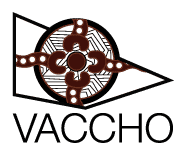Aboriginal Data and Action on Prevention Together (ADAPT)
The ADAPT report provides valuable insight into links between nutrition, physical activity and wellbeing amongst Aboriginal and Torres Strait Islander children in regional Victoria.
VACCHO and Deakin University’s Institute for Health Transformation (IHT) are thrilled to launch the ADAPT report which shows that more than two-thirds of Aboriginal and Torres Strait Islander children met guidelines for fruit consumption, sleep, screen time, and objectively measured exercise, and had low intakes of takeaway foods and sugary drinks.
The results were recently published in the Australian and New Zealand Journal of Public Health.
Aborignal Data and Action on Prevention Together
The information in the ADAPT report can be used to track health trends among Aboriginal children over time. We hope that this information is useful for your organisation to help plan health promotion campaigns, local service delivery, and for advocacy to funding bodies.
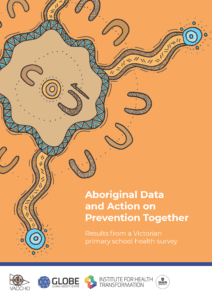
About ADAPT
In 2019, Deakin University conducted a health survey among primary school children (aged 9-12 years) in 18 local government areas of Victoria. Students had their height and weight confidentially measured and were surveyed about their food and drink intake, physical activity and wellbeing.
The survey questions covered:
- Consumption of fruit, vegetables, unhealthy snacks, take away food, sugary drinks and water.
- Physical activity including how much time children spent being physically active and whether or not they took active transport (e.g. walking, cycling, skating) to school as well as how much time they spent using a screen for recreation outside of school.
- Children’s perceived physical, social, emotional and school-related quality of life. It asked questions about children’s feelings and how often they had trouble doing everyday activities, getting along with others or paying attention at school.
All schools across the Great South Coast (6 local government areas) and the Goulburn Valley Ovens Murray region (12 local government areas) were invited to participate.
The survey was approved to use the ‘opt out’ model to student participation. This means that all students were provided with an opt-out form and if a parent or guardian preferred the child not to be involved in the survey they returned the form to the school.
A total of 138 schools were involved with around 80% of students in grade 4 and 6 participating in the survey. Of the approximately 3000 students included in our analysis, around 300 identified as Aboriginal and/or Torres Strait Islander.
Key findings
For more detailed results download the full report here.
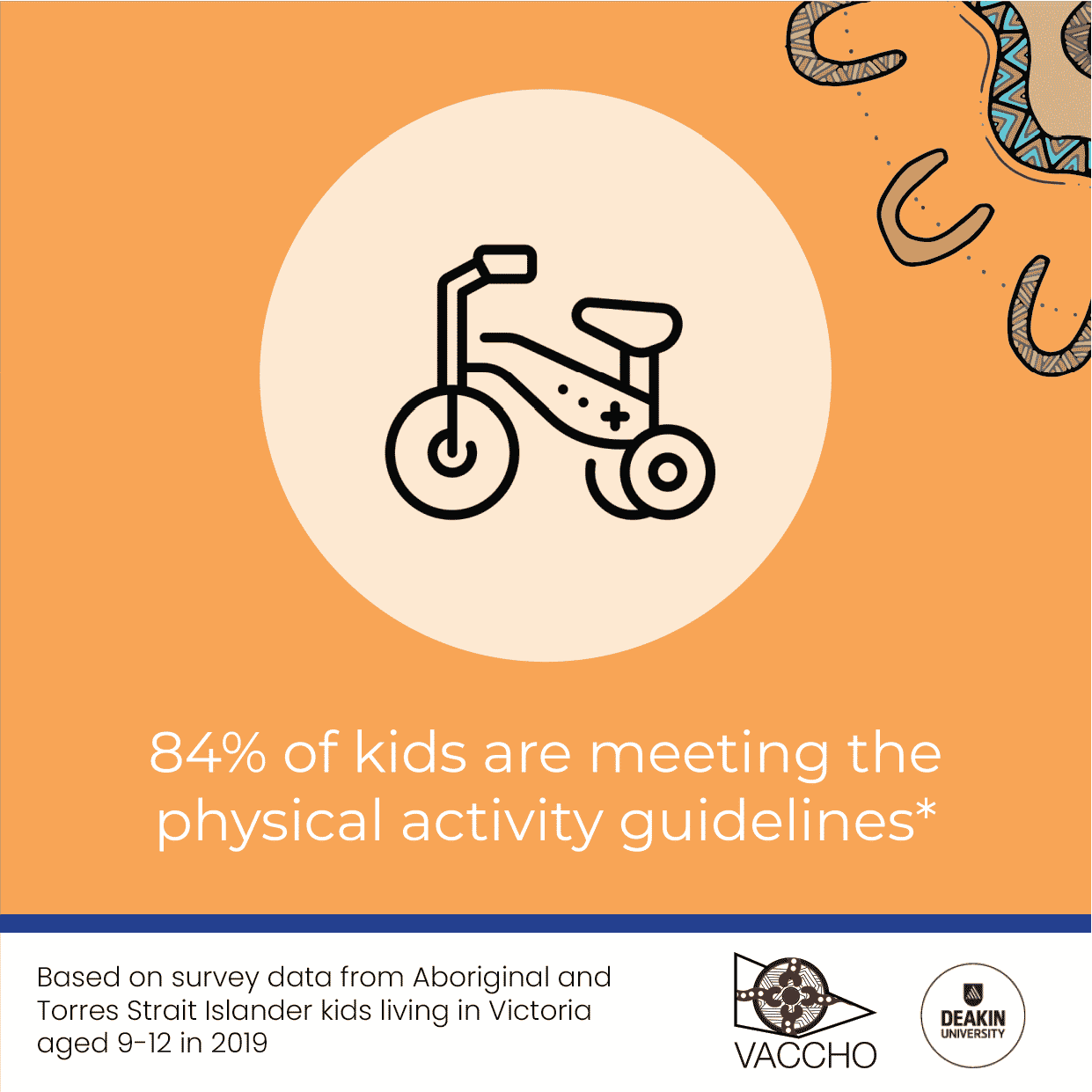
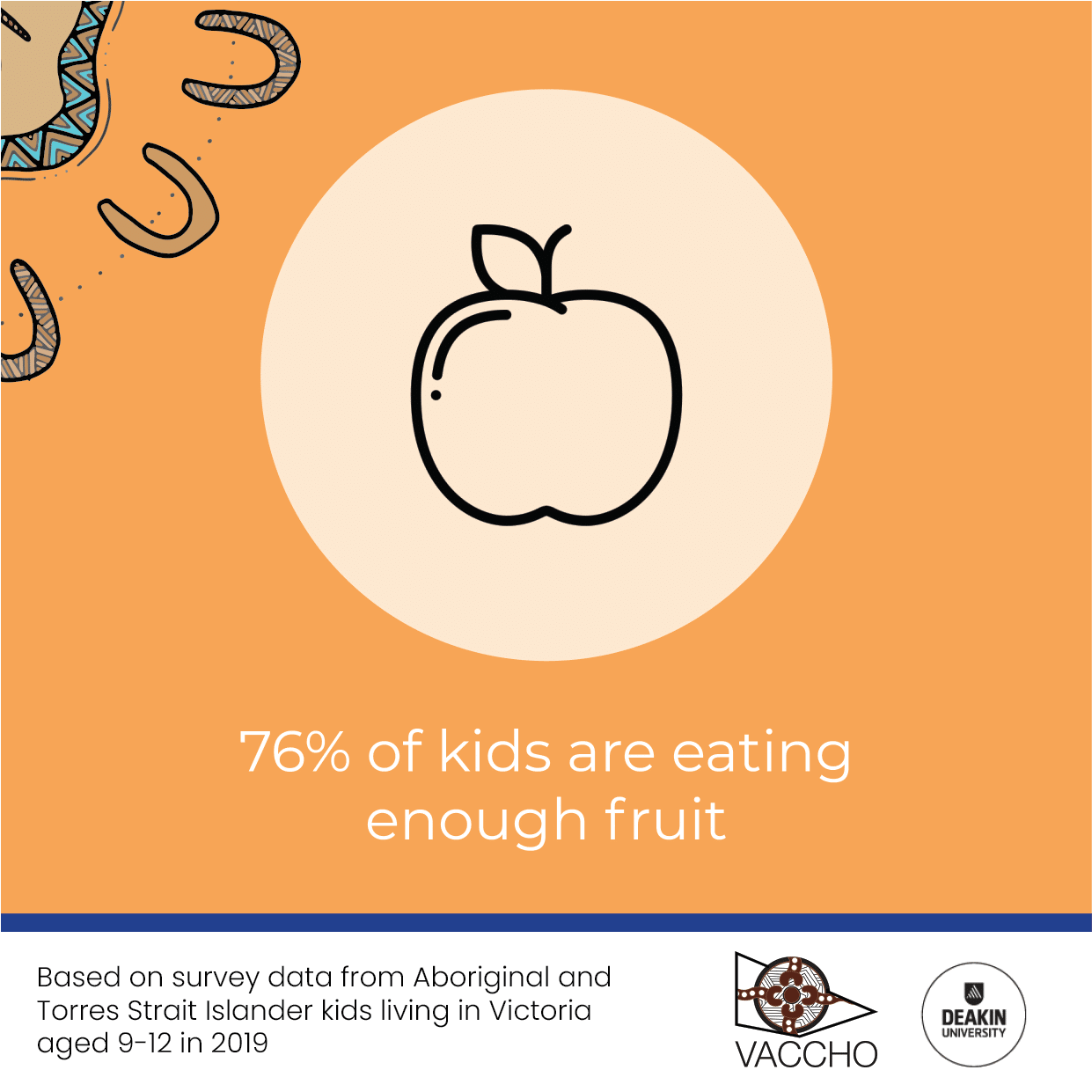
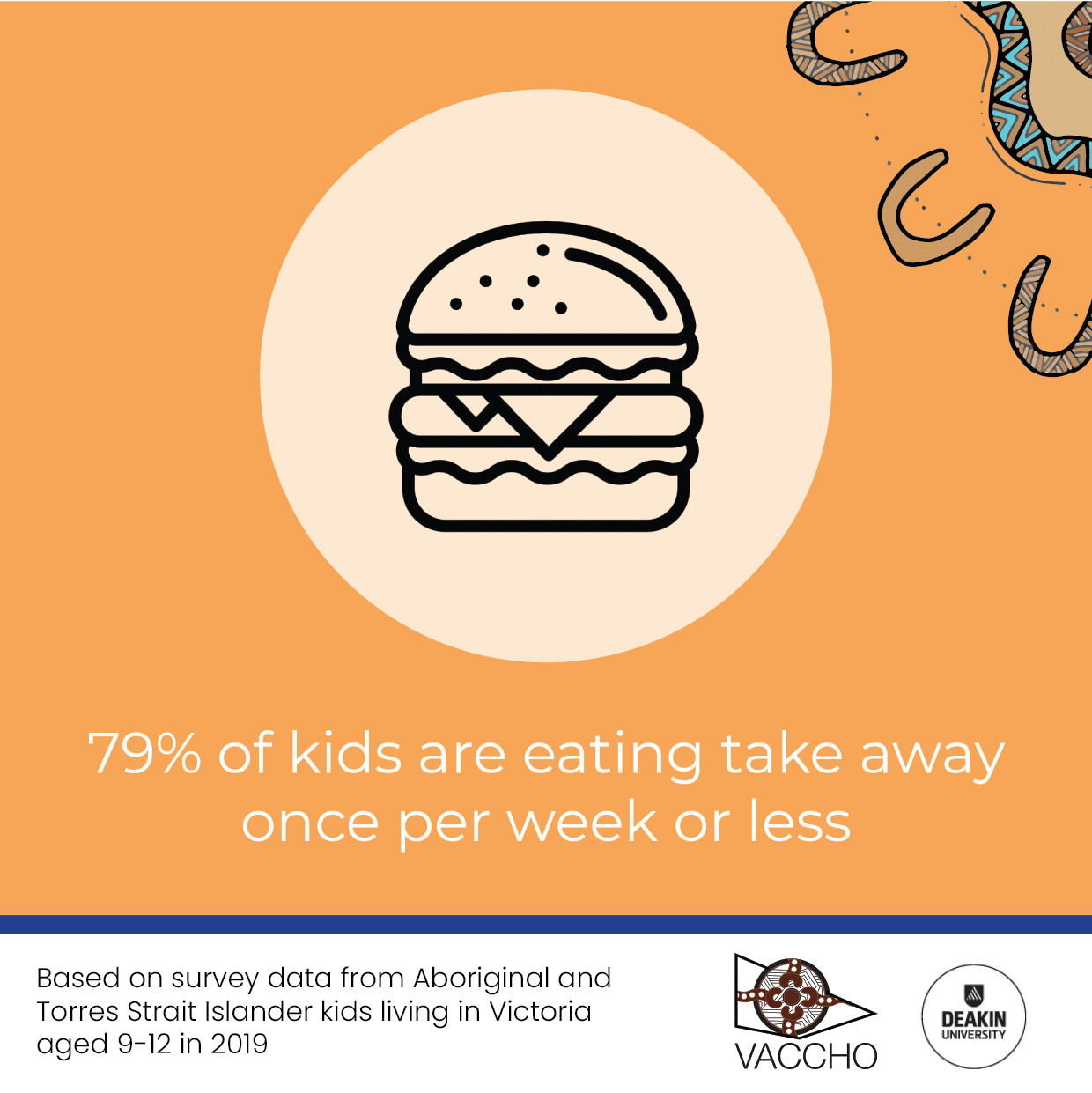
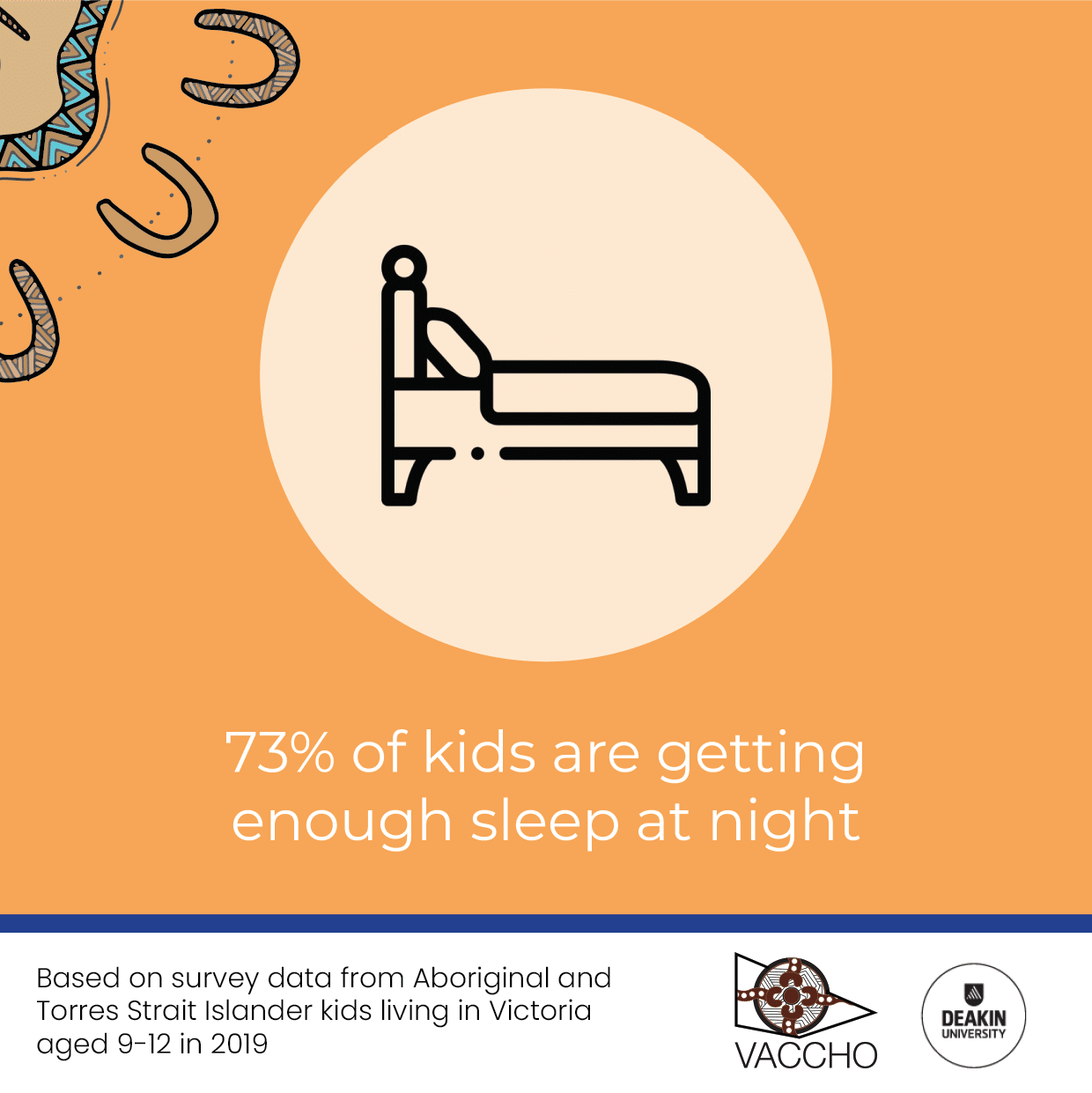
Enquiries
Get in touch with the VACCHO’s Nutrition team by submitting the form below.
About the artwork
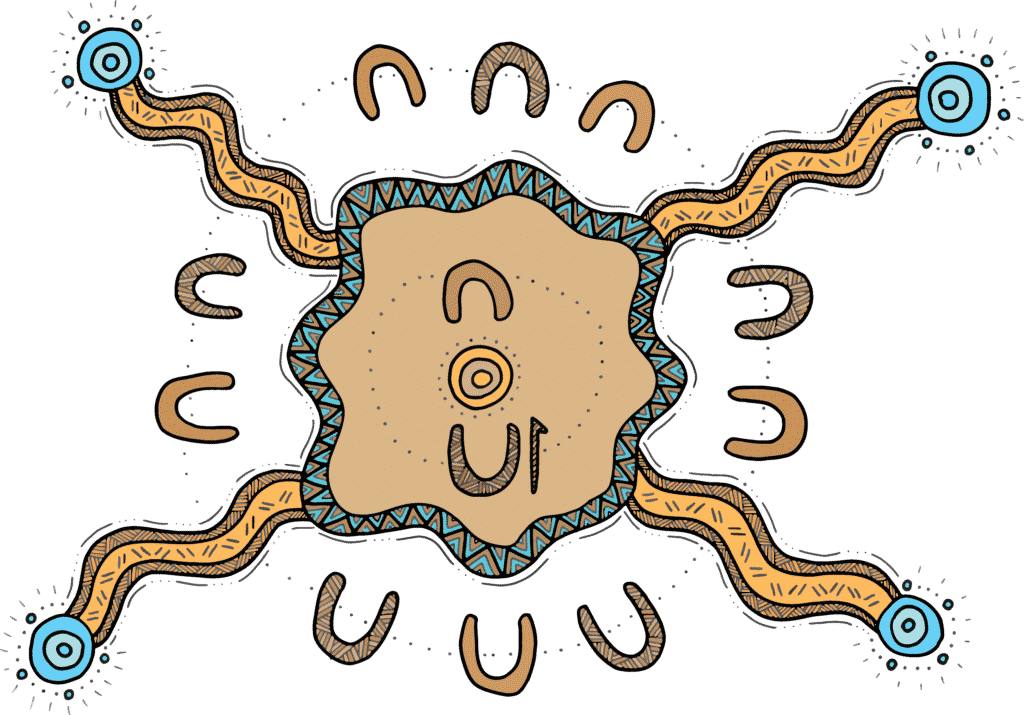
By Shakara Montalto, Gunditjmara woman
This artwork represents the significance of the whole tribe workings together as one, in the important task to gather food and water.
The two symbols sitting in the centre facing one another represent a man and the other, a woman. The circle in the middle of them represents them coming together, to work as a collective, to gather food to feed the entire tribe. The sitting symbols on the outer represents the whole tribe and the importance of everyone playing a role in either hunting, preparing or cooking food. The brown and orange colours represent the traditional Aboriginal land, which our people cared for and maintained, to ensure a healthy food supply, all year round for thousands of years. The curved paths have walking tracks which represent the tribe going out to look for bush tucker. The blue circles represent the rivers, oceans and waterholes and the importance of water for our people. Collecting, preparing and cooking food was such an crucial part of our tribes’ daily tasks. This ensured survival for many thousands of years, eating a nutritious well-balanced diet
